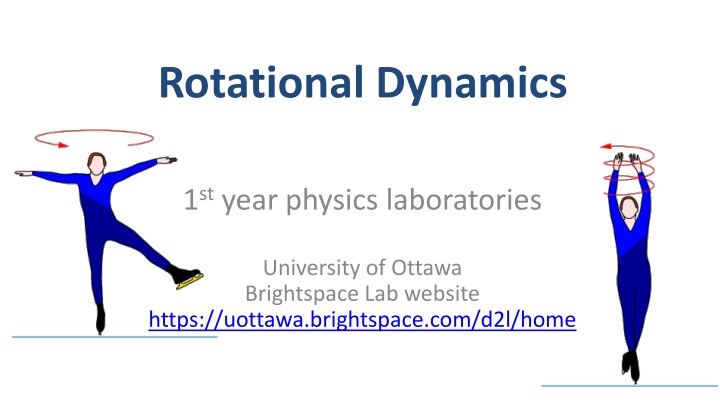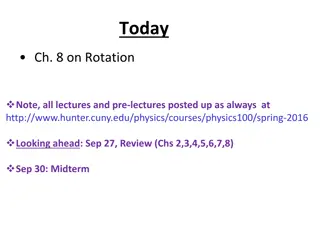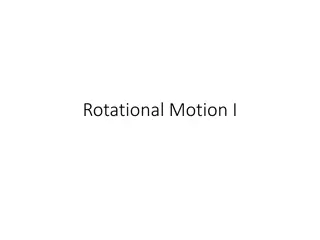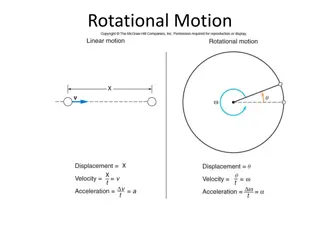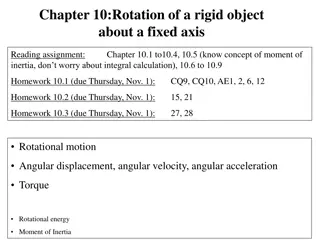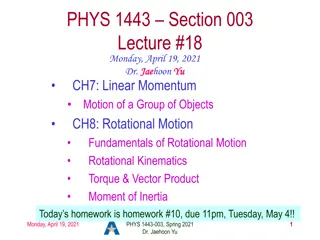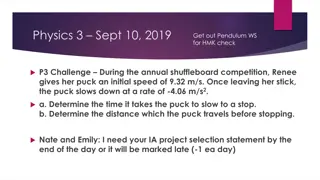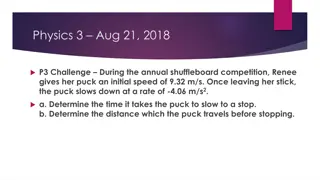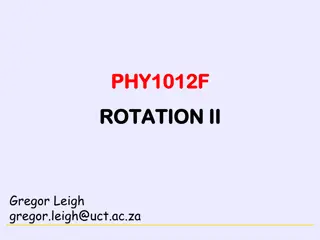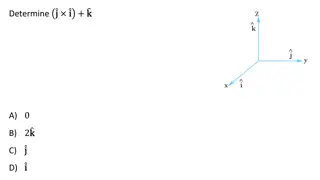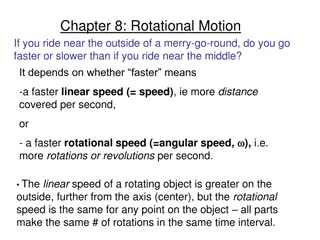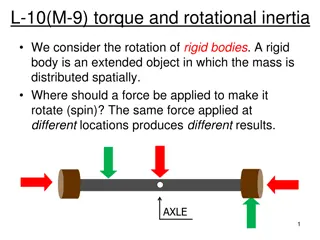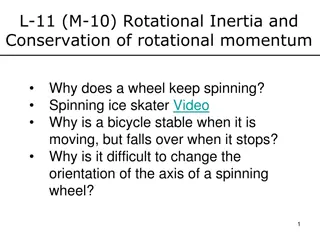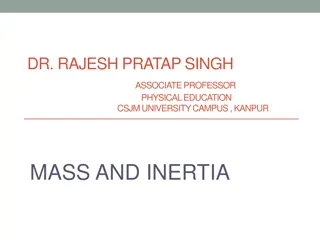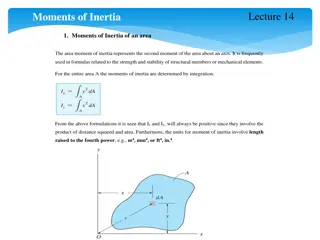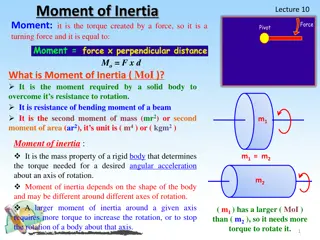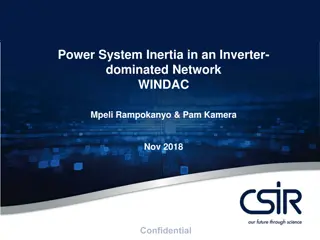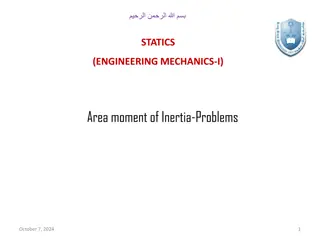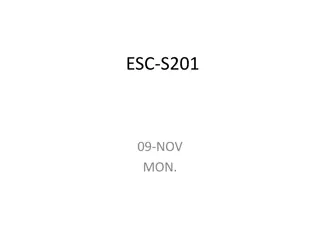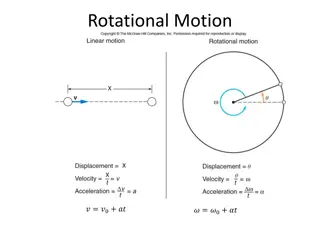Experimental Determination of Moment of Inertia in Rotational Dynamics Lab
In this university lab experiment, students apply known torques to various objects to measure angular accelerations and determine their moments of inertia. The setup involves rotating discs and rods with masses, using a rotational sensor for data collection. Important steps include measuring diameters, attaching masses, and conducting linear fits on graphs to find angular accelerations for different setups. Students explore Newtonian dynamics concepts related to rotational motion through hands-on activities.
Download Presentation

Please find below an Image/Link to download the presentation.
The content on the website is provided AS IS for your information and personal use only. It may not be sold, licensed, or shared on other websites without obtaining consent from the author.If you encounter any issues during the download, it is possible that the publisher has removed the file from their server.
You are allowed to download the files provided on this website for personal or commercial use, subject to the condition that they are used lawfully. All files are the property of their respective owners.
The content on the website is provided AS IS for your information and personal use only. It may not be sold, licensed, or shared on other websites without obtaining consent from the author.
E N D
Presentation Transcript
Rotational Dynamics 1styear physics laboratories University of Ottawa Brightspace Lab website https://uottawa.brightspace.com/d2l/home
INTRODUCTION Newtonian dynamics tells us that net force is proportional to acceleration ? = ??. For an object that is free to rotate, consider the rotational analogue: ? = ?? ( torque = moment of inertia angular acceleration ) The moment of inertia for a cylinder is given by: ? = ??2/2 where ? and ? are the mass and the radius of the cylinder.
Part 1 MOMENT OF INERTIA We can experimentally determine the moment of inertia of an object by applying a known torque and measuring the angular acceleration. You will apply a series of torques to a disc due to a hanging mass and measure corresponding the angular accelerations of the disc. Repeat for a double disc and rod with masses. A plot of ? vs ? will be used to graphically determine ?.
Part 1 MOMENT OF INERTIA The rotational sensor measures ? vs ?. Measure angular accelerations for different torque values: Angular acceleration can be found from the slope of the angular velocity vs time plot. The Torque applied to the disc can be found: ? = ?? ? is tension of hanging mass. Using Newton s 2nd law: ? = ?? = ?? ? ? = ?? ? ? = ?? ? ?? .
Part 1 MOMENT OF INERTIA Important information needed: Diameter of rotating horizontal pulley (black), mass and diameter of the first aluminum disc. Setup experiment as shown in picture on next slide. Attach string to black pulley on the sensor and hang it over the green pulley. Attach the mass hanger to the end of the string. Wind the large pulley and collect data (5 s) as the mass hanger accelerates the aluminum disc. Perform a linear fit on the ? vs ?graph to get angular accel. Repeat the measurement for increasing masses.
Part 1 MOMENT OF INERTIA Find the mass of the second aluminum disc (the one with cork padding). Repeat the experiment with both aluminum discs attached to the sensor (double disc). Find the masses of the rod and weights then attach them to the sensor. Repeat the experiment for the rod and weights (use 20 s data collection).
Part 2 Cons. of ang. momentum Similar to the linear momentum experiment, you will investigate how the angular momentum of a rotating system is affected by a change in the moment of inertia. You will measure the angular speed of a rotating disc before (?) and after (? ) a completely inelastic collision. The equations to calculate the angular momentums before and after the collision are: ? = ?1? ? = ?1? + ?2?
Part 2 Cons. of ang. momentum Mount your first aluminum disc to the pulley (same as first section of Part 1). Spin the first disc. You ll notice the velocity decreasing gradually. Position the second disc over the screw and practice dropping it onto the first. Collect the angular velocity data of the system before (?) and after (? ) the collision.
CLEAN UP DUE DATE The report is due at the end of the lab session. Make sure you submit your graphs in Brightspace before leaving! Turn off the computer, and don t forget to take your USB key. Put the discs, rod, and weights on the table. Please recycle scrap paper and throw away any garbage. Please leave your station as clean as you can. Push back the monitor, keyboard, and mouse. Please push your chair back under the table. Thank you!
